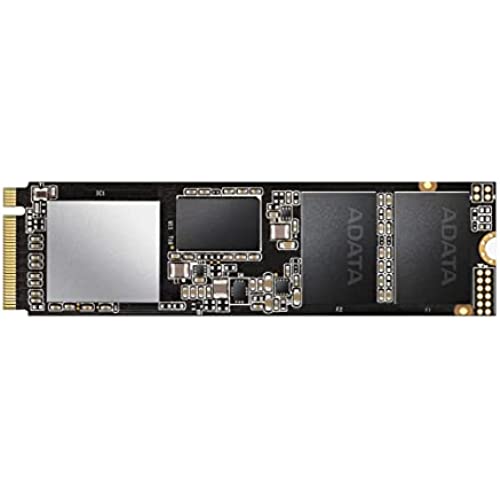
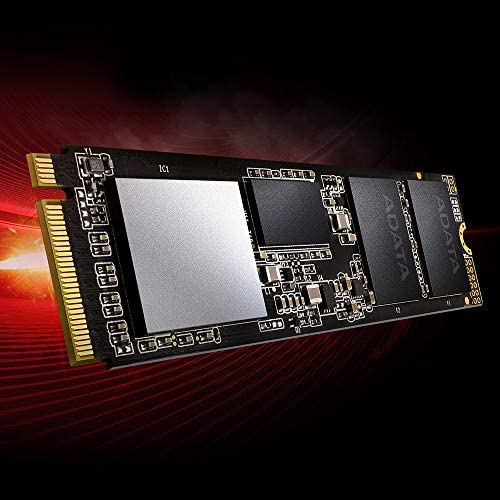
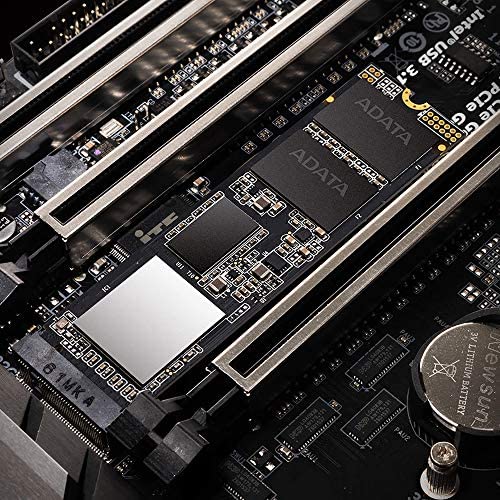
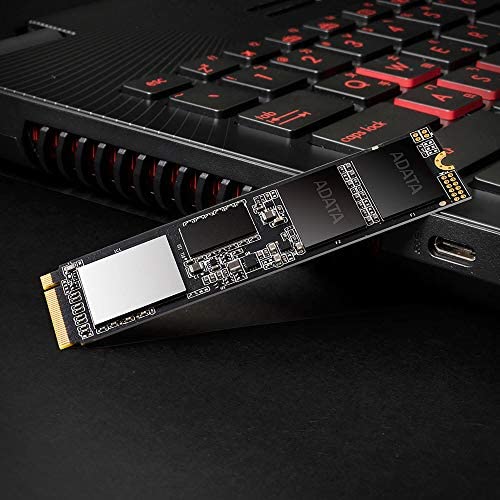
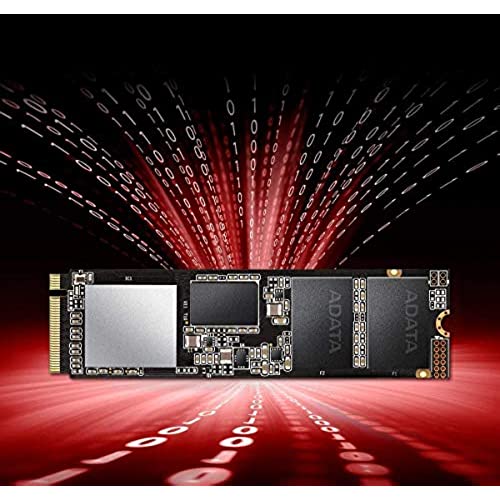
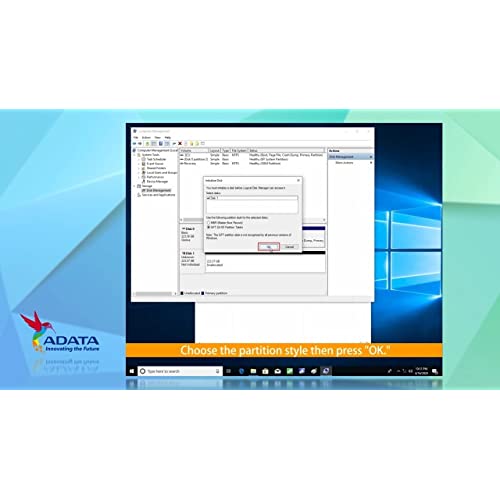






XPG SX8200 Pro 2TB 3D NAND NVMe Gen3x4 PCIe M.2 2280 Solid State Drive R/W 3500/3000MB/s SSD
-

Vincent
> 3 dayHopefully stays running because my brothers died
-

Ida Langworth PhD
> 3 dayAs many of recent reviews mentioned, ADATA switches to slower controller SM2262G, rather than the faster SM2262EN for this SSD. The speed is more like 3000/2300 MB/s rather than the advertised 3500/3000 MB/S so thats a roughly 20% loss in speed. That been said, 3000/2300 MB/s is still a decent speed for the price range ($200 for 2tb around 2020 BF), while the 2tb versions of Samsung 970 EVO Plus and WD 750 are around $250 range. It is pretty much the cheapest 2tb TLC M.2 with mid-range speed at this point(some lower end products might go below $100/TB mark but the speed is usually below 2000 MB/s). For 99% of the people, it is almost impossible to notice significant speed difference between this one and the more expensive drives like 970 EVO Plus in daily use. So, fair speed and good pricing, one star out for ADATAs little trick on controller. For those who seeing speed below 2000 MB/s, you can go to BIOS and check if the M.2 socket has been set to PCIE 3 x 2 mode which would be the bottle neck. Switch that to PCIE 3 x 4 (if supported by mobo, of course) and you should most likely see close to 3000MB/s.
-

CP
> 3 dayI have had a open NVME M.2 2280 slot open on my Lenovo 330s 15IKB GTX 1050 since August 2018 and was waiting to slap a drive in it to expand on the Mushkin Reactor SSD SATA 1TB I already had from my previously dead laptop. I did some research and got this drive. I decided to drop an extra $25 on this one vs some of the slightly cheaper NVME 1tb drives based on various reviews. It installed fine and I used the included heat sink as the secondary one I purchased with a screw kit would not fit in the laptop. Here is my computer info System SKU LENOVO_MT_81GC_BU_idea_FM_ideapad 330S-15IKB GTX1050 Processor Intel(R) Core(TM) i5-8250U CPU @ 1.60GHz, 1801 Mhz, 4 Core(s), 8 Logical Processor(s) Installed Physical Memory (RAM) 8.00 GB The benchmark with the drive empty as my secondary drive is impressive and came in a lot higher than others i had seen on the Amazon reviews. Benchmarks are just simulated results but i expect this drive to perform well. During the benchmark the temp rose to 64 deg which is a high load test and it idles at 46 deg with the included heat sink. If I remember I will update the review with some real world data after it run it with games and full of files. I intend to load the OS and programs on the NVME and if I see any changes or issues with the performance I will update the review with temperatures and performance. If the drive ends up running 2 hot I will look at installing one of the flat copper heat-sinks I have seen on amazon. The drive installed fine and was recognized automatically. I did a quick format using disk manager in windows 10 and was able to run the benchmarks on it quickly. This upgrade makes this a pretty decent budget gaming laptop even now with it 2 years old.
-

Aaron
> 3 dayI own the 1TB model and also the 512TB model and I plan to buy more for my upcoming builds. I have had zero problems with either of the drives. Here are the most important things I have learned in the process: 1.) Do *NOT* set your BLCK to anything other than 100MHz after installing any (not just this brand/model) M.2 drive; it will mess your drive installation up. 2.) Do not download or use XPGs version of Acronis. 3.) XPG also offers Macrium Reflect with these drives. Do download/use this software. It not only does it make cloning easy and painless, but it is a full featured software for backing up and restoring. Unlike other free softwares with drives, it does not restrict you to a drive that you bought; it will backup or restore any drive in the installed system. Especially with the 512GB drive, this is an amazing value. I paid $70 for the 512 GB drive, and the regular full version of Macrium Reflect costs about that much. To access the download, go to Adatas site (not XPG), and look for the link to Valuable software. It is something like consumer->support->download->valuable software. Not easy to find. 4.) The heatsink that comes with this drive is useless (except cosmetically). However, this drive does not really need a heatsink; it is very power efficient. 5.) If you cant find the M.2 screw in your motherboard box, look on the board itself; that is where I found mine. If you cant find it in either place, you are going to need to order a screw kit. You may want to check this before ordering any M.2 drive as none of them come with the screw. 6.) Use a magnetic screwdriver while installing your M.2 drive. You will be sorry if you dont. 7.) I got slightly better drive performance after adjusting my ring bus ratio. YMMV. 8.) There are very few ways that the speed of this drive can be felt as compared to a SATA SSD, but 3000MB/s sounds awesome, huh? 9.) Having components on only one side makes these drives good for laptop use. Drives with components on both sides dont always fit. I hope this helps.
-

Diana
> 3 dayI used to run my old operating system off of a 1TB hard drive. By the time my OS, software, libraries, etc, would load about 2-3 minutes would go by. I first bought an AMD5 3600 processor, bought 2 G-Skill 8GB each (16GB Total) ram and made certain to buy a new motherboard that has M.2 slots to be used to run my OS from and applications mostly used. I purchased an MSI Unify motherboard because it has space for “3” M.2 NVME Slots. I put everything together in a few hours. The last thing I installed was this 1TB NVME M.2 drive. I had to go into my Bios to change my settings from “Legacy” to “UEFI.” My computer now loads in 18 seconds. Wow, what a BIG difference this M.2 drive makes. I still have 2 hard disc drives in my computer. 1 is a 3TB WD formatted to GUID and the other is a Seagate 2TB hard drive that I had originally used as a back up drive. I loaded all my games, music, movies, pictures, etc, to these 2 hard drives. Down the road I will be buying 2 more of these M.2 drives and 16 more GB’s of memory. Spend the extra cash on this M.2 drive and watch how your computer will run in turbo mode running on board applications.
-

juanejot
> 3 dayI ordered this drive again two years after the first time, because my storage needs on the same PCI Gen3-capable board had increased, and the price & more recent reviews on this remained competitive. I had heard in the intervening time that ADATA had switched from the SM2262EN to the SM2262G controller, potentially affecting performance; had then heard that after public backlash they had switched back to the EN (this later revision referred to as “ENG,” and functionally equivalent to “EN,” not to “G”). That said, I was unsure whether old G controllers were still in distribution channels, especially given logistics concerns over the past two years. Unfortunately, the product listing is not specific, and I didn’t think to reach out to customer service to ask the question, until after I had placed my order. The automated response said to expect a response from a person within a few days AFTER I was due to receive the part; uh oh. But luckily, I got a response by the next day after my query, assuring me the item they had coming out to me was the “EN(G)” variant, and even guiding me on how to check once I had the packaging open, likewise assuring me that if it were “G,” I could send it right back & receive the correct one in replacement. When it arrived, it was indeed the ENG variant, matching both items I had received from them in the past. This experience of getting the ENG unit may not match your own, so if concerned, I urge you to reach out BEFORE ordering! That said, the speed and temperature profile of the one I received seems comparable to the original units, and the original review (below) stands, except that it’s now only about 2/3 the price it was then; even better! — Original review from 1/2020 below: MUCH cheaper than roughly equivalent Samsung units, with little performance hit. Especially on OSes for which the NVMe driver is not optimized for raw speed (say, macOS testing with Blackmagic Disk Speed Test, as opposed to Windows testing with CrystalDiskMark), the difference is likely negligible for most workloads, for a whole lot of savings. I chose not to use the included, but flimsy heatsink sheet, in favor of the one that came with the motherboard. Using that, I’ve never topped 40°C in the slot directly below the CPU (even under loads that put the CPU up to 85°C with a good but not amazing air cooler, in a case/fan config that’s admittedly pretty good for cooling).
-

Patrick Garon
> 3 dayI am really Happy with this Drive, The above benchmark is not the best I have done with it, I just wanted to have an image to go with my review, this the bench was being completed while i was doing a couple small tasks, the Max I have seen it go for Seq Reads thus far is 3,200 MB/s, But getting this item on a lightening Deal for $95 was a steal! and am purchasing another one ( I will be paying a bit more since the deal is off) but this is still cheaper than my Samsung Evo Plus, and is very comparable in speeds, I copied a 60 GB game folder, from and to the same drive at 1.2 - 1.3 GB/s, I am pleased with that outcome, this is also very nice for moving videos around if you are a creator. The software they provide for free with your purchase to clone your drive was very fast and took 12 minutes, with no issues. I have seen people reviewing this saying its not as advertised, but please be sure you are seeing what item they are talking about. The 3500 /3000 Speeds are for the 1 TB drive, not for the 256 that I have seen, and be sure you have no bottlenecks on your system, and remember if you are copying from a Sata SSD to this, you are of course not going to get 3000 MB/S read and Write speeds, you will need to either copy to and from the same drive (SX8200 Pro) or if you have 2 of these drives. the limit is as fast as the slowest drive on your system you are copying to or from.
-

Conrad2k
> 3 dayThis is an affordable SSD alternative. It performs well in both read and write. The only complaint is that it is double sided, meaning there are chips on both sides of the card. Not all enclosures and motherboards can handle double sided cards, so make sure yours can accommodate it. If it can, then this seems to be a great SSD.
-

KUMS
> 3 dayHere is the peak performance I could get with 10g file size and different block sizes. Ran on Ubuntu OS and at block level with direct IO (to avoid any filesystem caching effect). I suggest, disable filesystem cache (or do direct IO) with the benchmarking tool you are using to find the real performance. If I increase the QDEPTH, latency shoots up crazy particularly for block sizes 64k and above. With small files (5g and less) write performance is lot better for block sizes 64k and above. Here are the ball park numbers you can expect (picked best possible number with QDEPTH which showed reasonable latency). 10g file size sequential /random read for different block sizes (MB/s) ===================================================== 4k - 1344 / 882 8k - 2485 / 1246 64k - 3121 / 1815 128k - 3124 / 2014 1m - 3125 / 2586 10g file size sequential / random write for different block sizes (MB/s) ====================================================== 4k - 645 / 466 8k - 782 / 477 64k - 790 / 478 128k - 864 / 476 1m - 825 / 473 - Sustained seq write with 1m block size is about 250 MB/s
-

Aviv M
Greater than one weekI work in IT and have over a dozen of these as well as pretty much every other SSD on the market. As many reviews in 2020-2021 mention, they did switch over an important part to something inferior, but that happens from time to time and Im not going to focus on this, I am just reviewing this as it is regardless of how much better and cheaper it was before. SPEED -- 1/5 This is worse than a SATA SSD that you can purchase at a lower price. Fully empty, when you initially benchmark it, it barely even gets the advertised speed. This is on the most optimal conditions, and even under these, the benchmark looks like PCIe Gen3 x 2 and not Gen3 x 4. This is bad. It cant outperform something 30% cheaper that came out years ago. CONSISTENCY - 0/5 The absolute worst drive of any kind I have seen in my entire life. Writing a SEQUENTIAL test file to fill half the disk took 59 minutes, so about an average of 290MB per second, so maybe a really really old Samsung SSD from 8 years ago. This was jumping around from 2GB/s to 4GB/s for the first 15 seconds maybe just enough to cheat on a benchmark and then immediately all over the place, not even 100GB written when it went from 1GB/s to 60MB/s and 1.3GB/s then 60MB/s, 500MB/s to 60MB/s, 200-800MB/s, then maybe halfway through 100-200MB/s (this is where it was most stable if you want to call it that.) Its like using a random number generator for performance. TECHNOLOGY - 0/5 This uses SLC caching, has DRAM cache, basically a bunch of advanced methods to make it better and it performs worse than any drive Ive seen without any of that stuff. This is apparently TLC which is supposed to be superior to QLC. Basically, QLC tries to cram more. QLC is supposed to be slower, and less durable. This somehow performs about half as good as the same brand QLC which is baffling because the other model is supposed to be actually based on the XPG 8100, not the XPG 8200 PRO. As in, a 4TB version of this (double 2TB) that costs less than 2 times more even though 4TB is supposed to go up exponentially in price, performs better and more consistent as QLC than this TLC thats supposed to be the superior model of the same brand. VALUE - 0/5 This is where Ill quickly mention that the old version apparently was good, and therefore it means this is overhyped. No one bothers to update their reviews and no one bothers to research it further so they all immediately read or see something online and think this is a great value. Since XPG knows this, they basically charge way more for this model due to the high demand even though to give them some credit, XPG seems to have other better models. For some reason, and I doubt it was due to bad intentions, they had to switch the controller on these and it happened to be a bad choice. I think XPG probably ended up getting bait and switched by Silicon Motion, the supplier for the controller. Apparently this newer version thats bad is SM2262G and the old one is SM2262EN, but they did the switch over because the old version, although it performed almost on par with some of the best drives like Samsung (at a lower price, at the time) it had a shorter life. So I assume they switched over to this one to make it more reliable and ended up absolutely thrashing performance. Again, to be fair, this XPG 8200 Pro does have a good warranty, assuming they honor it properly. This is unfortunately the trade-off youll make unless you end up paying double for enterprise NVMe SSDs: the more consistently fast it is, the more likely it is to die 2-3x sooner. LIFE - 3/5 I have no reason to believe the life of this product would be lower than similarly priced NVMe SSDs. Since its TLC, itll have a better life by default versus QLC. The amount of writes you have to do to the drive to void the warranty is 1.5-3x more than competitors but I guess their strategy is to make sure you can never physically write that much to the disk by making it slow! TBW is 1280 which basically means you can write 700GB to it every day for 5 years. This means youd have to constantly write to it at about 8MB per second, or about 24MB/s assuming youre only using the computer 8 hours a day, lets say for work. This card will probably struggle to do that depending on what youre doing with it, how small the files are; the random speed test as I was constantly using it was probably about 27MB/s so barely above this threshold. So they do literally try to keep you from ever reaching that point by just making sure its slow and bad. GET ANY OTHER DRIVE. LITERALLY ANY OTHER ONE.
